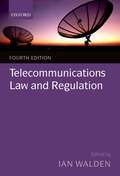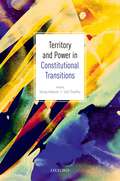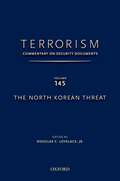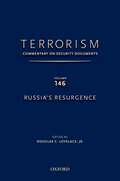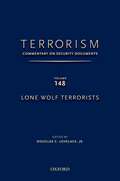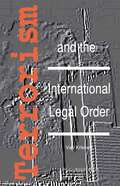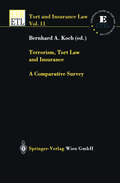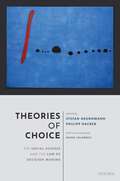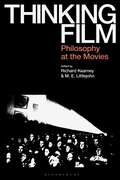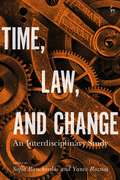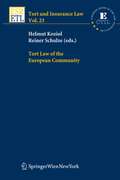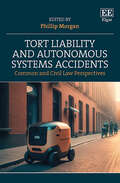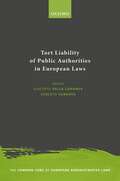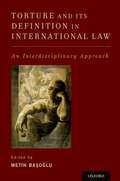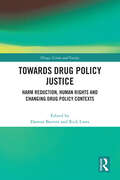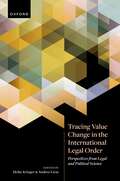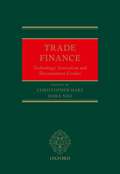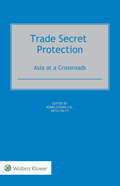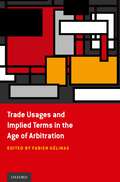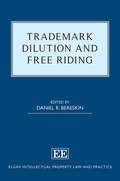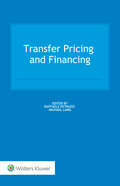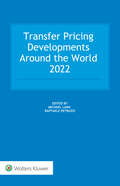- Table View
- List View
Telecommunications Law and Regulation
Since the last edition of the book was published, there have been a number of important developments in the telecommunications industry. Telecommunications Law and Regulation takes these changes into account, including an examination of the EU New Regulatory Framework, as well as the establishment of the Body of European Regulators for Electronic Communications (BEREC). There are also new chapters on spectrum management (radio frequencies), and consumer protection rules. The access and interconnection chapter addresses the issues surrounding the high capacity broadband widely provided by Next Generation Networks.The chapter on licensing and authorisation has been refocused to reflect the increasing regulatory focus on the mobile sector. The chapter on regulating content has also been significantly restructured and revised to reflect the changes in how we consume content. Written by leading experts, it is essential reading for legal practitioners and academics involved in the telecommunications industry.
Telling & Duxbury's Planning Law and Procedure
Designed to be a concise and accessible guide to the fundamental principles of planning law in England and Wales, Telling & Duxbury's Planning Law and Procedure represents an up-to-date, practical resource for practitioners and academics in the field. The book is organised into 21 chapters that together cover all aspects of planning law. It includes chapters on central and local administration, development plans, the meaning of development, planning permission, environmental impact assessment, enforcement, heritage protection and review by the courts. The author provides helpful directions to complementary resources, assisting the reader to build a thorough and comprehensive picture of planning law. The sixteenth edition looks closely at developments in statute and case law that have and will continue to influence practice, including the Enterprise and Regulatory Reform Act 2013; the Infrastructure Act 2015; the Housing and Planning Act 2016; the Neighbourhood Planning Act 2017; and decisions made in significant cases such as Tesco Stores v Dundee and Suffolk Coastal District Council v Hopkins Homes Ltd. Developments such as the Environmental Impact Assessment Regulations 2017, the National Planning Practice Guidance, the Planning Court, and the implications of Brexit have also been added. Written with both academics and practitioners in mind, this book is ideal for lawyers specialising in planning law, planning professionals, and students studying planning law, surveying, town planning, architecture, and environmental law. Updates to Telling & Duxbury's Planning Law and Procedure will be published online approximately three times per year at the following URL: www.oup.co.uk/companion/duxbury
Territory and Power in Constitutional Transitions
This collection of essays surveys the full range of challenges that territorial conflicts pose for constitution-making processes and constitutional design. It provides seventeen in-depth case studies of countries going through periods of intense constitutional engagement in a variety of contexts: small distinct territories, bi-communal countries, highly diverse countries with many politically salient regions, and countries where territorial politics is important but secondary to other bases for political mobilization. Specific examples are drawn from Iraq, Kenya, Cyprus, Nigeria, South Africa, Sri Lanka, the UK (Scotland), Ukraine, Bolivia, India, Spain, Yemen, Nepal, Ethiopia, Indonesia (Aceh), the Philippines (Mindanao), and Bosnia-Herzegovina. While the volume draws significant normative conclusions, it is based on a realist view of the complexity of territorial and other political cleavages (the country's "political geometry"), and the power configurations that lead into periods of constitutional engagement. Thematic chapters on constitution-making processes and constitutional design draw original conclusions from the comparative analysis of the case studies and relate these to the existing literature, both in political science and comparative constitutional law. This volume is essential reading for scholars of federalism, consociational power-sharing arrangements, asymmetrical devolution, and devolution more generally. The combination of in-depth case studies and broad thematic analysis allows for analytical and normative conclusions that will be of major relevance to practitioners and advisors engaged in constitutional design.
TERRORISM: The North Korean Threat (Terrorism:Commentary on Security Documen)
Terrorism: Commentary on Security Documents is a series that provides primary source documents and expert commentary on various topics relating to the worldwide effort to combat terrorism, as well as efforts by the United States and other nations to protect their national security interests. Volume 145, The North Korean Threat, examines the strategies adopted by the United States, China, and the international community in response to the nuclear threat posed by North Korea. The volume includes a selection of documents chosen to illustrate developments in this area from 2010 through 2016, with commentary from series editor Douglas C. Lovelace, Jr. The documents in this volume include 2016 UN Security Council resolutions on North Korea, Congressional Research Service reports covering various aspects of the U.S. response to North Korea's nuclear program, a U.S. Department of Defense report prepared for Congress on military and security developments related to North Korea, and a detailed description of the U.S. sanctions program against North Korea from the U.S. Treasury Department's Office of Foreign Assets Control.
TERRORISM: Russia's Resurgence (Terrorism:Commentary on Security Documen)
Terrorism: Commentary on Security Documents is a series that provides primary source documents and expert commentary on various topics relating to the worldwide effort to combat terrorism, as well as efforts by the United States and other nations to protect their national security interests. Volume 146, Russia's Resurgence, examines recent developments in the foreign policy and strategy of the Russian Federation, including an examination of its aggression against neighboring states with Russian populations, its recent focus on strengthening its military capabilities, its larger strategy vis-à-vis NATO and the United States, its utilization of hybrid warfare in the "gray zone" to achieve its goals, its increasing influence on Middle Eastern politics, and the historical context within which these developments have occurred. This volume includes Congressional Research Service reports on security issues concerning the United States, Ukraine, and the Russian Federation, as well as an English-language version of the Military Doctrine of the Russian Federation made available to the public, NATO's Framework for Future Alliance Operations, and recent studies on Russia's hybrid warfare from the NATO Defense College and the Joint Special Operations University Press.
Terrorism: Lone Wolf Terrorists (Terrorism:Commentary on Security Documen)
Terrorism: Commentary on Security Documents is a series that provides primary source documents and expert commentary on various topics relating to the worldwide effort to combat terrorism, as well as efforts by the United States and other nations to protect their national security interests. Volume 148, Lone Wolf Terrorists, examines the phenomenon of the solitary domestic terrorist, analyzes the distinction between such terrorists and mass murderers who are not deemed to be terrorists, considers the motivations of violent extremists, and examines the dilemmas faced by law enforcement in preventing solitary political extremists with violent ideologies from translating their beliefs into actions. The volume is divided into three sections, providing an overview of the topic, an examination of strategies for prevention of such attacks, and a consideration of the Internet's role in contributing to radicalization. Documents included in this volume include a CRS report on domestic terrorism, a report examining violent radicalization from a criminal justice perspective, and a CRS report differentiating hate crimes from domestic terrorism, as well as other reports on the lone wolf terrorism phenomenon and strategies to prevent and/or counter it. The last document in the volume is a CRS report relating to the advocacy of terrorism on the Internet, especially including social media, and the ways in which law enforcement might be able to address the problem of dangerous online speech within the current U.S. legal structure.
Terrorism and the International Legal Order:With Special Reference to the UN, the EU and Cross-Border Aspects
Terrorism and the International Legal Order introduces the various aspects surrounding the efforts which have been undertaken to enhance cooperation and coordination in the war against terrorism. It deals with jurisdiction and extradition, with the ICC and the ICJ, with safe havens and cross-border aspects. Van Krieken brings together key documents on terrorism in the context of the international legal order, all preceded by succinct introductions. He pays ample attention to all the UN organs, the Security Council and ECOSOC in particular, and to the European Union and its efforts to harmonize legislation. As fear exists that the fight against terrorism will erode the human rights regime, Van Krieken puts human rights in the broader context of international law and the quest for peace and justice. But he also extensively addresses the issue of asylum seekers and migrants who may have been, are, or might become involved in terrorism-related acts.
Terrorism, Tort Law and Insurance: A Comparative Survey (Tort and Insurance Law #11)
The tragic events of September 11th, 2001, have stirred international debate on how to cope with losses that terrorist acts inflict upon individuals and businesses. While tort law offers several possible responses to this question, insurers, funds and ad hoc legislation often step in as well. This volume brings together renowned tort law experts from Austria, France, Germany, Israel, Italy, South Africa, Spain, Sweden, Switzerland, the United Kingdom, and the United States, who examine compensation for victims of terrorism in their respective jurisdictions. Contributions from the U.S. also address procedural problems of mass tort litigation and present the September 11th Victim Compensation Fund. Further contributions include a survey of liability insurance issues as well as an economic analysis of possible solutions. The book is concluded by a comparative analysis and an assessment of legal policy issues.
Theories of Choice: The Social Science and the Law of Decision Making
Choice is a key concept of our time. It is a foundational mechanism for every legal order in societies that are, politically, constituted as democracies and, economically, built on the market mechanism. Thus, choice can be understood as an atomic structure that grounds core societal processes. In recent years, however, the debate over the right way to theorize choice - for example, as a rational or a behavioral type of decision making - has intensified. This collection provides an in-depth discussion of the promises and perils of specific types of theories of choice. It shows how the selection of a specific theory of choice can make a difference for concrete legal questions, in particular in the regulation of the digital economy or in choosing between market, firm, or network. In its first part, the volume provides an accessible overview of the current debates about rational versus behavioral approaches to theories of choice. The remainder of the book structures the vast landscape of theories of choice along with three main types: individual, collective, and organizational decision making. As theories of choice proliferate and become ever more sophisticated, however, the process of choosing an adequate theory of choice becomes increasingly intricate. This volume addresses this selection problem for the various legal arenas in which individual, organizational, and collective decisions matter. By drawing on economic, technological, political, and legal points of view, the volume shows which theories of choice are at the disposal of the legally relevant decision-maker, and how they can be operationalized for the solution of concrete legal problems. The editors acknowledge the kind support of the Fritz Thyssen Foundation for an exploratory conference on the subject of the book.
Thinking Film: Philosophy at the Movies
Hailed as one of America's original art forms, film has the distinctive character of crossing high and low art. But film has done more than this. According to American philosopher Stanley Cavell, film was also a place where America in the 1930s and 1940s did its thinking, a tradition that was taken up and enriched throughout world cinema. Can film indeed think? That is, can film do the work of philosophy?Following Cavell's lead to think along the tear of the analytic-continental traditions, this book draws from both sides of the philosophical divide to reflect on this question. Spanning generations and disciplines, pondering everything from art house classics to mainstream blockbusters, Thinking Film: Philosophy at the Movies aims to fling open the doors to this conversation on all sides. Inquiring into both philosophy's word on film and film's word to philosophy, the interdisciplinary dialogue of this book traverses the conceptual and the particular as it considers how film catalyzes our thinking and sets us talking. After viewing the world through film, we find our world--and ourselves--transformed by deeper understanding and new possibilities.This book aims to provide a novel and engaging way in to thinking with and about this enduringly popular art form.
Thomas Aquinas's Quodlibetal Questions
Thomas Aquinas was one of the most significant Christian thinkers of the middle ages and ranks among the greatest philosophers and theologians of all time. In the mid-thirteenth century, as a teacher at the University of Paris, Aquinas presided over public university-wide debates on questions that could be put forward by anyone about anything. The Quodlibetal Questions are Aquinas's edited records of these debates. Unlike his other disputed questions, which are limited to a few specific topics such as evil or divine power, Aquinas's Quodlibetal Questions contain his treatment of hundreds of questions on a wide range of topics--from ethics, metaphysics, philosophy of mind, and philosophy of religion to dogmatic theology, sacramental theology, moral theology, eschatology, and much more. And, unlike his other disputed questions, none of the questions treated in his Quodlibetal Questions were of Aquinas's own choosing--they were all posed for him to answer by those who attended the public debates. As such, this volume provides a window onto the concerns of students, teachers, and other interested parties in and around the university at that time. For the same reason it contains some of Aquinas's fullest, and in certain cases his only, treatments of philosophical and theological questions that have maintained their interest throughout the centuries.
Time, Law, and Change: An Interdisciplinary Study
Offering a unique perspective on an overlooked subject – the relationship between time, change, and lawmaking – this edited collection brings together world-leading experts to consider how time considerations and social, political and technological change affect the legislative process, the interpretation of laws, the definition of the powers of the government and the ability of legal orders to promote innovation.Divided into four parts, each part considers a different form of interaction between time and law, and change. The first part offers legal, theoretical and historical perspectives on the relationship between time and law, and how time shaped law and influences legal interpretation and constitutional change.The second part offers the reader an analysis of the different ways in which courts approach the impact of time on law, as well as theoretical and empirical reflections upon the meaning of the principle of legal certainty, legitimate expectations and the influence of law over time.The third part of the book analyses how legislation and the legislative process addresses time and change, and the various challenges they create to the legal order.The fourth and final part addresses the complex relationship between fast-paced technological change and the regulation of innovations.
Tort Law of the European Community (Tort and Insurance Law #23)
This publication deals with the European dimension of tort law. It provides a critical analysis of the acquis communautaire, asking if and to what extent the provisions and case law in the field of tort law are based on a conclusive system and are in accord with the national legal systems. It thus evaluates whether the acquis communautaire form the beginning of a comprehensive and coherent EC tort law or if the single directives and regulations are contradictory and lack a general concept that is yet to be found. To gain an overview of ‘EC Tort Law’ certain provisions and decisions were analysed by a group of authors under thirteen elements that form the basis of tort law e.g. fault/strict liability, causation, damage, damages and limitation of actions. An analysis of these aspects was then undertaken by another group of authors each focusing on their respective legal families within the European Union. The publication also contains a section on terminological issues in EC tort law.
Tort Liability and Autonomous Systems Accidents: Common and Civil Law Perspectives
Autonomous systems driven by artificial intelligence (AI) technologies have significant potential for increased productivity and improved safety in many sectors, but it is inevitable that some accidents will occur. The law needs an adequate way to respond to these scenarios and compensate those wrongfully injured. This comprehensive book examines the unique difficulties that autonomous systems create for existing accident compensation systems founded on tort, and proposes solutions.Its chapters question the adequacy of accident compensation systems designed around the human wrongdoer, or a human whose conduct can be attributed to a legal person, when the 'wrongdoer' is an autonomous system. With a multi-jurisdictional approach, including both common and civil law perspectives, this book examines the many challenges that autonomous systems present in tort law and sets forth that tort lawyers will need to significantly adjust their thinking to face these challenges. Focus is given to proposals and developments at an EU level and finding solutions to the problems brought about by autonomous systems.This insightful text will be of great value to both students, researchers and practitioners in tort law, accident compensation and AI. High tech companies, think tanks, consultancies and organisations interested in autonomous systems and accidents will also widely benefit from its expertise.
Tort Liability of Public Authorities in European Laws (The Common Core of European Administrative Law)
This series argues that there is a common administrative core to European legal systems that can be better understood in comparative terms. This volume examines government liability in tort, using case studies to explore different government responses. Part I sets the stage for the project and the parameters followed by the scholars involved. Part II expands on the legal systems chosen for comparison, setting up their general tort procedures. Part III presents case studies from Austria, the European Union, France, Germany, Hungary, Italy, Poland, Romania, Spain, Switzerland, and the United Kingdom. Each case study has a theoretical response detailing what would happen should that case occur within each country's borders. Part IV compares and contrasts the information provided in Part III. It examines both the commonalities and the distinctive traits of these legal systems, with a view to understand the nature of their 'common core'. This volume is an essential tool for anyone involved in administrative and constitutional law and government liability in tort.
Torture and Its Definition In International Law: An Interdisciplinary Approach
This book presents an interdisciplinary approach to definition of torture by bringing together behavioral science and international law perspectives on torture. It is a collaborative effort by a group of prominent scholars of behavioral sciences, international law, human rights, and public health with internationally recognized expertise and authority in their field. It represents a first ever attempt to explore the scientific basis of legal understanding of torture and inform international law on various definitional issues by proposing a sound theory- and empirical-evidence-based psychological formulation of torture. Drawing on scientific evidence from the editor's 30 years of systematic research on torture, it proposes a learning theory formulation of torture based on the concept of helplessness under the control of others and offers an assessment methodology that can reduce the element of subjectivity in legal judgments in individual cases. It also demonstrates how this formulation can help understand the nature and severity of ill-treatments in different contexts, such as domestic violence and adverse conditions of penal confinement. Through a learning theory analysis of "enhanced interrogation techniques," it demonstrates not only why these techniques constitute torture but also how they help us understand the contextual defining characteristic of torture in general. The proposed formulation implies a broader concept of torture than previously understood, provides scientific and moral justification for the evolving trends in international law towards a broader coverage of ill-treatments in contexts beyond official custody and points to new directions of expansion of the concept. With a focus on the concepts of shame and humiliation and their evolutionary origin, the book explains why inhuman or degrading treatments can cause as much pain or suffering as physical torture. Although treatment issues are not covered, the book sheds light on potentially effective treatment approaches by offering important insights into psychology of torture.
Towards Drug Policy Justice: Harm Reduction, Human Rights and Changing Drug Policy Contexts (Drugs, Crime and Society)
Taking the shifting global drug policy terrain as a starting point, this collection moves beyond debates about whether to reform drug policies to a focus on delivering ‘drug policy justice’ – repairing the damage caused by the war on drugs as a component of reform efforts and safeguarding against future harms in legal markets. This book brings together some of the leading international thinkers and advocates on harm reduction and drug policy to introduce key questions in contemporary drug policy. Across five themes, and with contributions from different regions and disciplines, it explores ethical, legal, empirical and historical perspectives on delivering ‘drug policy justice’ from supply through to use. Essays cover a wide range of issues, from the effects of COVID on drug policy to securing economic and environmental justice, and from human rights in Asian drug policy to questions of race and equity in cannabis reforms, providing diverse insights on both prominent and overlooked drug policy challenges. Towards Drug Policy Justice is a benchmark text for scholars, students, advocates and policymakers as the book explores new models of global drug policy reform.
Tracing the Roles of Soft Law in Human Rights
Soft law increasingly shapes and impacts the content of international law in multiple ways, from being a first step in a norm-making process to providing detailed rules and technical standards required for the interpretation and the implementation of treaties. This is especially true in the area of human rights. While relatively few human rights treaties have been adopted at the UN level in the last two decades, the number of declarations, resolutions, conclusions, and principles has grown significantly. In some areas, soft law has come to fill a void in the absence of treaty law, exerting a degree of normative force exceeding its non-binding character. In others areas, soft law has become a battleground for interpretative struggles to expand and limit human rights protection in the context of existing regimes. Despite these developments, little attention has been paid to soft law within human rights legal scholarship. Building on a thorough analysis of relevant case studies, this volume systematically explores the roles of soft law in both established and emerging human rights regimes. The book argues that a better understanding of how soft law shapes and affects different branches of international human rights law not only provides a more dynamic picture of the current state of international human rights, but also helps to unsettle and critically question certain political and doctrinal beliefs. Following introductory chapters that lay out the general conceptual framework, the book is divided in two parts. The first part focuses on cases that examine the role of soft law within human rights regimes where there are established hard law standards, its progressive and regressive effects, and the role that different actors play in the incubation process. The second part focuses on the role of soft law in emerging areas of international law where there is no substantial treaty codification of norms. These chapters examine the relationship between soft and hard law, the role of different actors in formulating new soft law, and the potential for eventual codification.
Tracing Value Change in the International Legal Order: Perspectives from Legal and Political Science
International law is constantly navigating the tension between preserving the status quo and adapting to new exigencies. But when and how do such adaptation processes give way to a more profound transformation, if not a crisis of international law? To address the question of how attacks on the international legal order are changing the value orientation of international law, this book brings together scholars of international law and international relations. By combining theoretical and methodological analyses with individual case studies, this book offers readers conceptualizations and tools to systematically examine value change and explore the drivers and mechanisms of these processes. These case studies scrutinize value change in the foundational norms of the post-1945 order and in norms representing the rise of the international legal order post-1990. They cover diverse issues: the prohibition of torture, the protection of women's rights, the prohibition of the use of force, the nonproliferation of nuclear weapons, sustainability norms, and accountability for core international crimes. The challenges to each norm, the reactions by norm defenders, and the fate of each norm are also studied. Combined, the analyses show that while a few norms have remained surprisingly robust, several are changing, either in substance or in legal or social validity. The book concludes by integrating the conceptual and empirical insights from this interdisciplinary exchange to assess and explain the ambiguous nature of value change in international law beyond the extremes of mere progress or decline.
Trade Finance: Technology, Innovation and Documentary Credits
Trade Finance provides a much-needed re-examination of the relevant legal principles and a study of the challenges posed to current legal structures by technological changes, financial innovation, and international regulation. Arising out of the papers presented at the symposium, Trade Finance for the 21st Century, this collection brings together the perspectives of scholars and practitioners from around the globe focusing on core themes, such as reform and the future role of the UCP, the impact of technology on letters of credit and other forms of trade finance, and the rise of alternative forms of financing. The book covers three key fields of trade finance, starting with the challenges to traditional trade financing by means of documentary credit. These include issues related to contractual enforceability, the use of "soft clauses", the doctrine of strict compliance, the fraud exception, the role of the correspondent bank, performance bonds, and conflict of laws problems. The second main area covered by the work is the technological issues and opportunities in trade finance, including electronic bills of exchange, blockchain, and electronically transferable records. The final part of the work considers alternative and complementary trade finance mechanisms such as open account trading, supply-chain financing, the bank payment obligation, and countertrade.
Trade Secret Protection: Asia at a Crossroads
In recent years, as companies implement strategies to protect their intellectual property in a competitive environment with rapidly developing technology, trade secret protection law has gained increasing importance. This is especially true in Asia, where the staggering commercial value of trade secrets, fierce cross-border competition, and large-scale labour mobility characterize the region’s economy. This book – the first systematic study of trade secret protection law covering a number of key Asian jurisdictions – provides a detailed analysis of the relevant statutory and case law of Japan, Korea, China, Taiwan, Thailand, Singapore, Hong Kong, Malaysia, and India. In addition, a chapter on European Union trade secret protection law is included for further purposes of comparison. Thirty-one local experts provide a clear overview of national laws and practices by examining the following aspects of their respective national regimes: requirements of trade secrets; validity and scope of confidentiality and/or non-competition clauses; burden of proof and its shifting or reversal; order for protecting the secrecy of a trade secret during prosecution and trial; civil remedies (injunctive relief and damages); and criminal punishment for trade secret infringement. With its authoritative insights and comprehensive coverage of the dynamic and multifaceted development of trade secret protection law in Asia, the book will be a primer for practitioners, corporate counsels, judges, and scholars concerned with cross-border protection of intellectual assets.
Trade Usages and Implied Terms in the Age of Arbitration
If a dispute between commercial parties reaches the stage of arbitration, the cause is usually ambiguous contract terms. The arbitrator often resolves the dispute by applying trade usages, either to interpret the ambiguous terms or to determine what the given contract's terms really are. This recourse to trade usages does not create many problems on the domestic level. However, international arbitrations are far more complex and confusing. Trade Usages and Implied Terms in the Age of Arbitration provides a clear explanation of how usages, and more generally the implicit or implied content of international commercial contracts, are approached by some of the most influential legal systems in the world. Building on these approaches and taking account of arbitral practice, this book explores possible conceptual frameworks to help shape the emerging transnational law of trade usage. Part I covers the treatment and conceptual grounding of usages and implied terms in the positive law of influential jurisdictions. Part II defines the approach to usages and implied terms adopted in the design and implementation of important uniform law instruments dealing with international business contracts, as well as in the practice of international commercial arbitration. Part III concludes the book with an outline of what the conceptual grounding of trade usages could be in the transnational law of commercial contracts.
Trademark Dilution and Free Riding (Elgar Intellectual Property Law and Practice series)
Written by a team of international experts, marshalled by one of the world’s foremost trademark lawyers, Trademark Dilution and Free Riding is the leading comparative work on trademark dilution.Trademark owners are motivated to litigate for a variety of reasons, often taking action in order to protect the integrity of a trademark and its commercial magnetism. This book assists the reader in navigating through the array of issues threatening well-known trademarks.Structured in three parts, the book first maps out the concept of trademark dilution as it has developed in Europe, in the U.S. and at the international level. It then sets out the current law on dilution in the most significant jurisdictions across the globe, explaining the national position on protection, infringement and remedies. Finally, it delivers a deep-dive into how fair use, parody and freedom of expression have affected dilution enforcement. This book is a must-have resource for trademark professionals worldwide, and will also stand as a valuable reference point for intellectual property scholars.Key Features:A leading author teamWide-ranging jurisdictional coverageHighly structured analysis for ease of navigationPractical guidance on protecting trademarks and remedies for infringementChapter on use of Survey Evidence in U.S. dilution casesExtensive discussion of the relationship between dilution and freedom of expression in the EU and U.S.
Transfer Pricing and Financing
In recent years, the interpretation and implementation of transfer pricing regulations of intra-group transactions involving financing functions increased exponentially as one of the main priorities of both taxpayers and governments. This topic has also attracted the attention of international organizations since 1972, whereby an extensive guidance has been rendered by the OECD in the Transfer Pricing Guidance on Financial Transactions that became Chapter X of the OECD Transfer Pricing Guidelines in February 2020. Not long after, the United Nations included these topics in Chapter 9 of its Practical Manual for Developing Countries in 2021. This book’s comprehensive approach to the practical application of transfer pricing rules to specific types of financing transactions ensures an in-depth understanding of the taxation of these transactions between related parties. Chapters contributed by renowned academics and practitioners based also on the work of international organizations elucidate the complex interaction between transfer pricing and the following types of intra-group financial transactions: loans; financial guarantees; cash pooling; hybrid financing; factoring; captive insurance; and asset management. Each contribution contains a balanced mix of theoretical understanding and practical examples, including case studies and references to key case law. Aware that legal certainty in this area remains unachievable despite the relevant work so far of the OECD and the UN, this book aims to alleviate this deficiency with principle-based and practical knowledge on transfer pricing applied to financial transactions. Tax lawyers, in-house tax counsel, tax authorities, international organizations, business communities, advisory firms, and academics will welcome this matchless overview and guide to one of the most important topics in international taxation.
Transfer Pricing Developments Around the World 2022
Intensive work on transfer pricing, one of the most relevant and challenging topics in the international tax environment, continues to increase worldwide at every level of government and international policy with a far-reaching impact on countries’ legislations, administrative guidelines, and jurisprudence. This book presents an in-depth, issue-by-issue analysis of the current state of developments along with suggestions for future solutions to the problems raised. Emerging from the research conducted by the WU Transfer Pricing Center at the Institute for Austrian and International Tax Law at WU (Vienna University of Economics and Business), this book offers eight topic-based chapters prepared by international experts on transfer pricing. Greatly helping to define recent transfer pricing issues around the world, this book encompasses the following topics: Global Transfer Pricing Developments. Transfer Pricing Developments in the European Union. Transfer Pricing Developments in the United States. Transfer Pricing Developments in Developing Countries and Emerging Economies. Recent Developments on Transfer Pricing in the Post-Covid-19 Era. Recent Developments on Transfer Pricing and Substance. Recent Developments on Transfer Pricing and Business Restructurings. Recent Developments on Transfer Pricing and New Technologies. The intense work of international organizations such as the OECD, UN, and other international organizations, as well as the intense work of the EU, is thoroughly analyzed in this book. The detailed analysis will be of immeasurable value to the various players, including international organizations, the business community and advisory firms, corporate CEOs and CFOs, and government officials as well as to tax lawyers, in-house counsel, and interested academics in facilitating efficient dialog and a coordinated approach to transfer pricing in the future.
